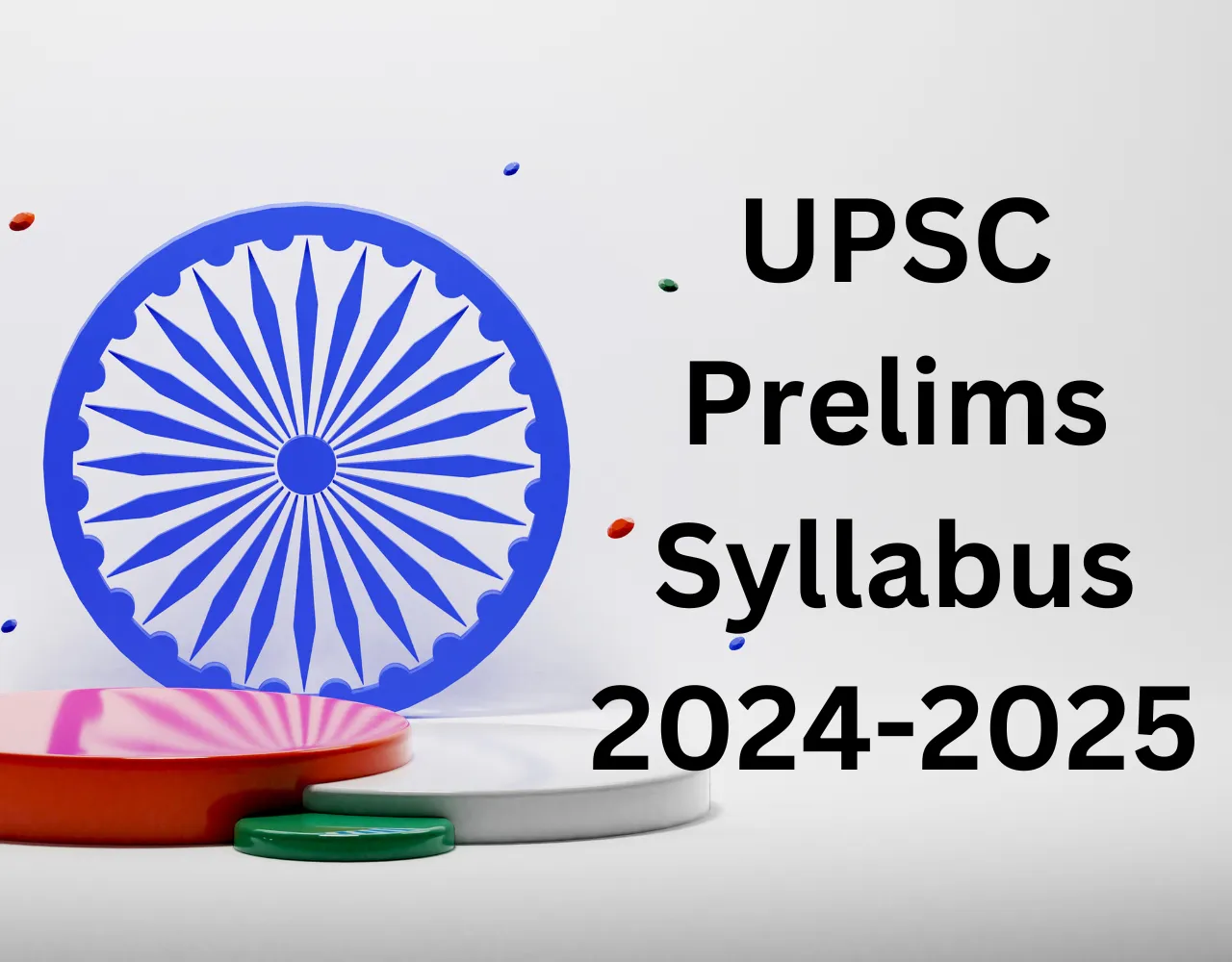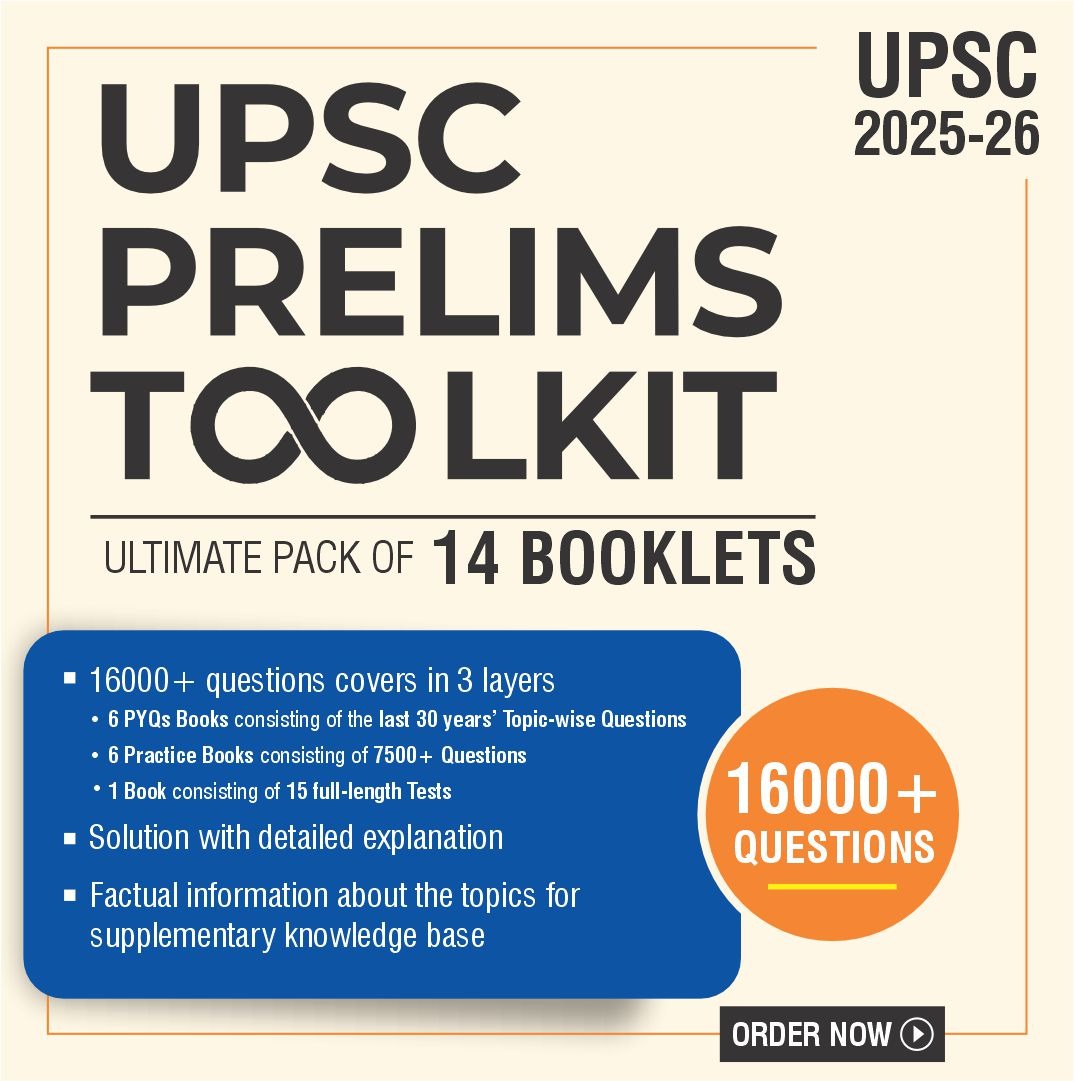Contents
- 1 Detailed syllabus of UPSC (Prelims) preliminary exam as per official syllabus
- 2 UPSC Civil Services IAS Prelims detailed syllabus Paper-I as per official syllabus
- 2.1 History of India and the Indian National Movement
- 2.2 Indian and World Geography-Physical, Social, Economic Geography of India and the World
- 2.3 Indian Polity and Governance-Constitution, Political System, Panchayati Raj, Public Policy, Rights Issues, etc.
- 2.4 Economic and Social Development-Sustainable Development, Poverty, Inclusion, Demographics, Social Sector Initiatives, etc.
- 2.5 General issues on Environmental ecology, Bio-diversity and Climate Change – that do not require subject specialization
- 2.6 Miscellaneous
- 3 UPSC Civil Services IAS Prelims Syllabus Paper-II as per official syllabus
Detailed syllabus of UPSC (Prelims) preliminary exam as per official syllabus
The Prelims examination is the first stage of the Civil services examination. It is a screening test as the marks scored in this exam are not counted for the declaration of final ranks. It is only to qualify for the main examination. IAS UPSC Prelims Syllabus 2024-2025
Pattern and marking system of prelims paper of UPSC CSE
As per the official syllabus, the preliminary exam is of objective type consisting of two papers: Paper-I and Paper-II. There are four alternatives for the answers to every question. For each question for which a wrong answer has been marked by the candidate, one-third (0.33) of the marks assigned to that question will be deducted as a penalty.
If a candidate gives more than one answer, it will be considered wrong. No marks will be counted for unattempted questions, nor any marks will be deducted.
The question paper is set in both languages: English and Hindi. Each paper will be of two hours. Blind candidates and candidates with Locomotor Disability and Cerebral Palsy will, however, be allowed an extra time of twenty minutes per hour for each paper.
Even though it is a screening test, it plays a huge role in clearing the exam. Its syllabus acts as a founding block for the main examination preparation as well.
Although UPSC provides with an outline of the topics that need to be covered, it is crucial for candidates to have a clear and elaborative understanding of the syllabus. With the help of this blog, an insight into the detailed syllabus will be provided.
UPSC Civil Services IAS Prelims detailed syllabus Paper-I as per official syllabus
History of India and the Indian National Movement
SUB- TOPICS: Ancient and Medieval History of India
- Prehistoric India and Indus Valley Civilization
- Early and Later Vedic civilization
- Buddhism and Jainism and their contributions to Indian culture
- Early Janpath’s and early European Invasions
- The Mauryan Empire
- Post Mauryan kingdoms and the Early Kingdoms in Southern India
- The Gupta Empire and their Successors (Maukhari, Maitraka, Pushyabhuti (Harsha))
- Kingdoms of Deccan and Pallava dynasty
- Imperial Cholas and their contributions for spreading Indian culture to the Far East
- Early Medieval developments in India
- Delhi Sultanate (Political and Administrative policies and their contribution to the field of Economy, Art, Science and Technology etc.)
- Kingdoms of Vijaya Nagar and Bhamini Sultanate
- The Mughal Empire (Political and Administrative policies and their contribution to the field of Economy, Art, Science and Technology, etc)
- Other Regional Kingdoms of Medieval Kingdom (Kingdoms in Kashmir, Bengal etc.,)
- The Bhakti and The Sufi Movement and its contribution to Indian culture
- The Marathas and other regional kingdoms after the fall of Mughal Empire and the arrival of Europeans
SUB -TOPICS: Modern India -Indian National Movement
- India in the Late Eighteenth Century
- The advent of Europeans and the British Conquests
- India under the Company’s rule (Administrative structure, Developments, reforms in various fields, etc.)
- The revolt of 1858 and its aftermath (Administrative Changes)
- Socio-Religious movement in the first half of 19th Century
- Freedom Struggle under Moderate Phase and political organizations prior to 1885
- Freedom Struggle under Extremist Phase (1905-1917) including Home Rule Movements
- India and Neighbourhood policy
- Socio-Religious movement in the latter half of 19th Century and early 20th century
- The Gandhian Era of Indian freedom struggle
- Growth of revolutionary organisations in India and abroad
- Peasants and Tribal Movements and the growth of women movements in colonial India and after independence
- Committees in Education, Police, etc prior and after Independence
After Independence:
- Consolidation of India after Independence(Territorial consolidation, State reorganization and Tribal policies, etc)
- Foreign Policy and developments in Nehruvian Era
- Political developments till Indira Gandhi
- India under Indira Gandhi (JP movement, emergencies etc)
- India during Rajiv Gandhi (Srilankan war, Political developments, etc)
- India since Rajiv Gandhi till today(Foreign Policies, political developments etc.)
SUB- TOPICS: Indian art and culture
- Indian Architecture, Sculpture and Pottery
- Indian Paintings
- Indian Handicrafts
- UNESCO’s World Heritage sites of India
- UNESCO’S Intangible Culture Heritage
- Languages in India
- Indian Literature
- Schools of Philosophy
- Martial Arts in India
- Cultural Institutions in India
- Languages
- Science and Technology throughout ages
- Calenders
- Fairs and Festivals
- Coins
Indian and World Geography-Physical, Social, Economic Geography of India and the World
SUB -TOPICS: Physical, Social, Economic Geography of the World
- Solar System & the Earth and basics of latitude and longitude
- Continents, Oceans and Ocean Currents
- Geomorphology (Interior of earth, Internal forces & their impact – Volcanoes, Earthquakes, Folding, Faulting, External forces & their impact – Weathering, Erosion etc.
- Climatology (Weather and Climate, Planetary winds, Jet streams, Precipitation, Distribution of rainfall, cyclone and Anti-cyclones, etc)
- Biogeography (Soil formation, types and biomes based on soil distribution)
- Landforms (due to running water, glaciation, desert landforms, Limestone, chalk and coastal areas, etc)
- Natural resources and mineral resources and distribution of key natural resources across the world
- Industries- types and their locational factors
- World Population, Distribution & Density
- Races & Tribes, Settlement & Migration
- Agriculture and major cropping pattern and Agro-Climatic Regions in India
- Animal Husbandry, Fisheries and Aquaculture
- Land Reforms and Land use pattern
- Industries- types and their locational factors population, Migration, Settlements
SUB- TOPICS: Physical, Social, and Economic Geography of India
- Location, Area and Boundaries of India
- Structure and Relief: Physiographic Divisions of India
- Drainage System of India
- Weather, Climate and Seasons of India
- Soils and its distribution in India
- Indian Flora and Fauna,
- Natural resources, mineral resources and distribution of key natural resources across India
- Agriculture and major cropping pattern and Agro-Climatic Regions in India
- Animal Husbandry, Fisheries and Aquaculture
- Land Reforms and Land use pattern in India
- Mineral and Energy Resources of India
Indian Polity and Governance-Constitution, Political System, Panchayati Raj, Public Policy, Rights Issues, etc.
SUB -TOPICS:
- The Constitution- Historical underpinnings and Making, Salient Features
- The Preamble, The Union and its Territory, Citizenship
- Fundamental Rights
- Directive Principles & Fundamental Duties
- Amendment of Constitution, Basic Structure of the Constitution,
- Emergency Provisions, Inter-State and Centre-State Relations
- Central Government (President, Vice President, Prime minister, Central Council of Ministers
Parliament) - State Government (Governor, Chief Minister, Council of Ministers)
- Parliament (Parliamentary Committees, Parliamentary Forums, Parliamentary Group) and State Legislature
- Judiciary: Supreme Court, High Courts, Subordinate Courts and Tribunals
- Local Government: Panchayati Raj, Local Urban Government, Scheduled and Tribal Areas, Co-operative societies
- Constitutional Bodies and Non-Constitutional Bodies
- Elections, Anti-Defection Laws and Political Parties
- Various provisions of Recent Acts, Constitutional amendment bills and Acts etc.
- Governance and e-governance initiatives
- Important provisions about RTI, Citizen’s Charter & Anti-corruption initiatives
- Role of Civil Society and social audit
- Miscellaneous (Official Language, Rights and Liabilities of the Government, Authoritative Text of the Constitution in Hindi Language, Special Provision relating to Certain States, Cases etc)
Economic and Social Development-Sustainable Development, Poverty, Inclusion, Demographics, Social Sector Initiatives, etc.
SUB -TOPICS:
- National Income Accounting and Human Development in India
- Central Bank in India and its powers, contribution etc.
- Money and Banking including Banking reforms since Independence
- Capital Markets, Money Markets and its concepts
- Inflation and Unemployment
- Public Finance in India
- Balance of Payments: Definition, Current and Capital Accounts, Convertibility including FDI, FII etc.
- India and IMF, WTO, WIPO and other International Institutions (NDB, AIIB, etc.)
- Agriculture (Recent trends, Farm distress and government initiatives, Animal husbandry etc. )
- Five-year Plans and Rolling plans
- Economic Reforms since 1991
- Industry and Industrial policies, Labour reforms, Companies Act etc.
- Services sector and policies.
- Infrastructure, Communication and Investment Models
- IPRs (Intellectual Property Rights) and Indian IPR battles
General issues on Environmental ecology, Bio-diversity and Climate Change – that do not require subject specialization
SUB -TOPICS:
- Basics about Environment, Ecosystem and Ecology
- Various types of Pollution and its impacts, mitigation etc.
- Protected areas including National parks, Wildlife sanctuaries, etc.
- Bio-Diversity and conservation
- Environment Legislations, National Institutions and Environmental organizations in India
- International Environmental conventions, Environmental Organizations and their initiatives
- Climate Change organizations and mitigation strategies, India and Climate change
- Environment Impact Assessment
- Renewable Energy and its development in India
- Environmental issues including sand mining, challenges in the Himalayan ecosystem, GM crops etc.
- Ocean acidification and Ocean depletion
- India’s National Missions on the environment (8 missions, Bamboo mission, Clean Ganga etc.,)
Miscellaneous
Sub-topics:
Security Issues and Disaster Management
Science and Technology
- Basics of Physics, Chemistry, Bio-logy
- Biotechnology
- Space technology
- IT, Computer and Robotics related updates
- Government policies and Initiatives to improve science
- Important Current Affairs for UPSC Prelims (Government schemes, Acts, Bills and Regulations, Important Judgements, International Organisations and their initiatives, Index, Reports and Summits, Protected areas and Species)
UPSC Civil Services IAS Prelims Syllabus Paper-II as per official syllabus
- Comprehension.
- Interpersonal skills including communication skills;
- Logical reasoning and analytical ability;
- Decision-making and problem-solving;
- General mental ability;
- Basic numeracy (numbers and their relations, orders of magnitude, etc.) (Class X level),
- Data interpretation (charts, graphs, tables, data sufficiency etc. — Class X level);
Note: Paper-II of the Civil Services (Preliminary) Examination will be a qualifying paper with minimum qualifying marks fixed at 33%.
To cover the following topics, candidates are recommended to refer to following sources:
SUBJECTS | Primary Sources | Secondary sources |
Polity and Governance |
|
|
Ancient and Medieval History |
|
|
Modern history |
|
|
Art and culture |
|
|
Economy |
|
|
Environment |
|
|
World and India Geography |
|
|
Note: To keep oneself updated on the following topics, it is recommended to regularly read The Hindu or The Indian Express newspaper. | ||
FAQs on UPSC Prelims Exam
What is the purpose of UPSC Prelims?
The UPSC Prelims is conducted to select candidates for the second stage of the Civil Services Examination, known as the Main examination. It serves as a screening test to shortlist candidates for the Main examination.
What is the syllabus for UPSC Prelims?
The UPSC Prelims Syllabus includes two papers: Paper-I and Paper-II (CSAT). The Paper 1 syllabus covers a wide range of topics including history, geography, polity, economy, science, and current affairs.
How are the questions framed in UPSC Prelims?
UPSC Prelims questions are objective-type (multiple-choice questions). Each question has four options, and candidates must select the correct answer.
Is there negative marking in UPSC Prelims?
Yes, there is negative marking in UPSC Prelims. One-third of the marks assigned to a question are deducted for each incorrect answer.
What are the best books and resources for UPSC Prelims preparation?
There are various books and resources available for UPSC Prelims preparation, including NCERT textbooks, standard reference books, current affairs magazines, and online resources. The choice of books depends on an individual’s study preferences and strengths.
How can I stay motivated during UPSC Prelims preparation?
Staying motivated can be challenging, but setting clear goals, maintaining a routine, seeking support from family and friends, and periodically assessing your progress can help you stay on track.








